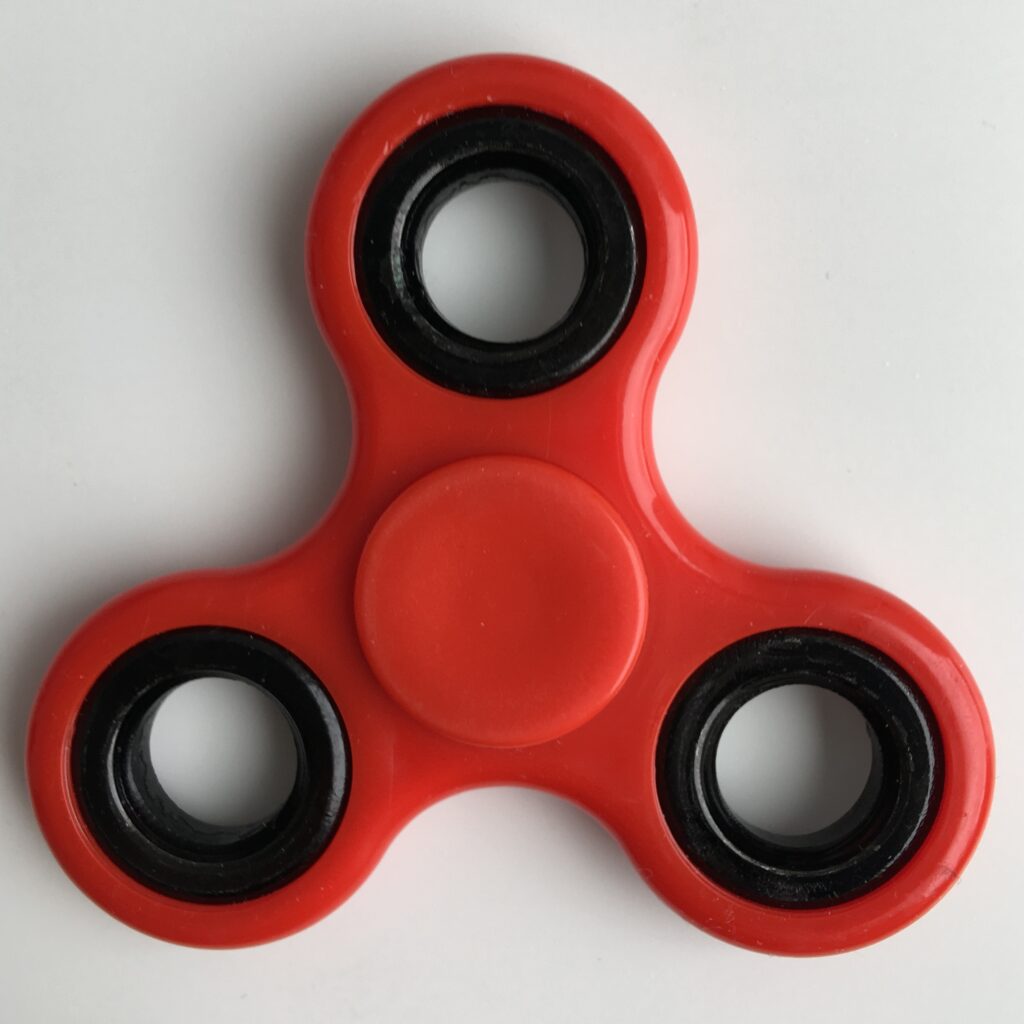If you’ve been active online in the past few years, you’ve likely noticed this intriguing, small toy making waves – the fidget spinner. They used to be everywhere – in an array of colours, shapes, and sizes. And there were a number of people who claim to have invented these fidget spinners. But credits didn’t matter at that time though, because if you’ve ever got your hands on one, you knew this was your new addiction.
So, what are these fidget spinners really? What is the use of fidget spinners?
A fidget spinner has two or three paddle-shaped blades attached to a central core, a design that’s both simple and ingenious. When you press the core, the blades are set in motion, and the momentum also gives a sensory effect to us.
Who invented fidget spinners? And why were they invented? What’s their history?
The history of fidget spinners begins at Catherine Hettinger – who is said to be the original creator of the fidget spinner, from way back in 1993 – although she did not get to make any money off it. How it grew into a viral phenomenon is difficult to say, but it arose from recommendations from doctors, many argue.
Some researchers advocate for the spinner’s potential benefits in aiding concentration, particularly in individuals with ADHD. While a group of scientists believes in the theory, a number of them couldn’t see the co-relation between these spinners and AHAD patients and people with other attention disorders. The spinner’s motion is not just a physical activity; it’s believed to potentially enhance cognitive tasks by providing a subtle, focused engagement.
There were a number of debates on them being banned in classrooms as they could impact concentration. Anecdotal evidence from educators suggests that younger children may struggle to use these items as intended concentration tools, often becoming more distracted. Nonetheless, this toy has been on Amazon’s top 20 bestsellers ever since it was released around March 2017. And has been flying off shelves of every other toy store. There are hundreds of variations available in today’s creative market, though they revolve about a fixed blueprint.
One significant advantage of these spinners is their portability, outshining other bulkier fidget toys.
So what really made them so much fun?
The simple joy of being about to fidget without annoying people!
How many times did you hear your mom tell you to stop fidgeting around with things, for example, constantly clicking a pen or bitting one of the pens or your nails just as a habit? Happened to the best of us. We’re curious we see something and want to figure out what it is, so we fidget.
Read more: The 10 Most Unusual Looking Phones Designed by Nokia
Fidget Spinners Use #1: It’s a Great Stress Buster
Many users find them to be superior stress busters, offering more engagement and fun than traditional desk toys like stress balls.
The movements fidget spinners exhibit may be responsible for helping cope up with stress and help us stay under control and reduce anxiety or stress. Nervous for your next meeting? Grab ’em now.
Some smokers have also suggested that these have helped them quit smoking, but there is no scientific evidence as such. Since it does help smokers, then bring them on, the world could use fewer smokers.

Fidget Spinners Use #2: Super exciting designs
Initially built around a ninja star kind of design, these little spinners have evolved a long, long way. They now come as fidget cubes, your favorite car logo, or even as Batman! With so many exciting designs to choose from, these become an irresistible deal!
In conclusion, fidget spinners burst onto the scene as a simple yet addictive gadget, fascinating users of all ages. Their origin traces back to Catherine Hettinger, though they gained popularity without much credit to her. Initially designed as a playful tool, they unexpectedly found a place in therapeutic contexts, particularly among ADHD patients, although scientific consensus on their benefits remains divided.
Despite some controversy in educational settings, their widespread appeal is undeniable. Fidget spinners have evolved from their basic form into an array of creative designs, making them a trendy accessory and a stress-relieving tool. Their portability and varied designs have kept them relevant, offering a discreet way to manage fidgeting habits, reduce stress, and possibly even aid in breaking habits like smoking.
Ultimately, fidget spinners symbolize the simple joys of tactile engagement and have proven to be more than just a fleeting fad. They embody a unique blend of fun, function, and fashion, appealing to our innate desire to fidget, focus, and find a bit of playful distraction in our daily lives.